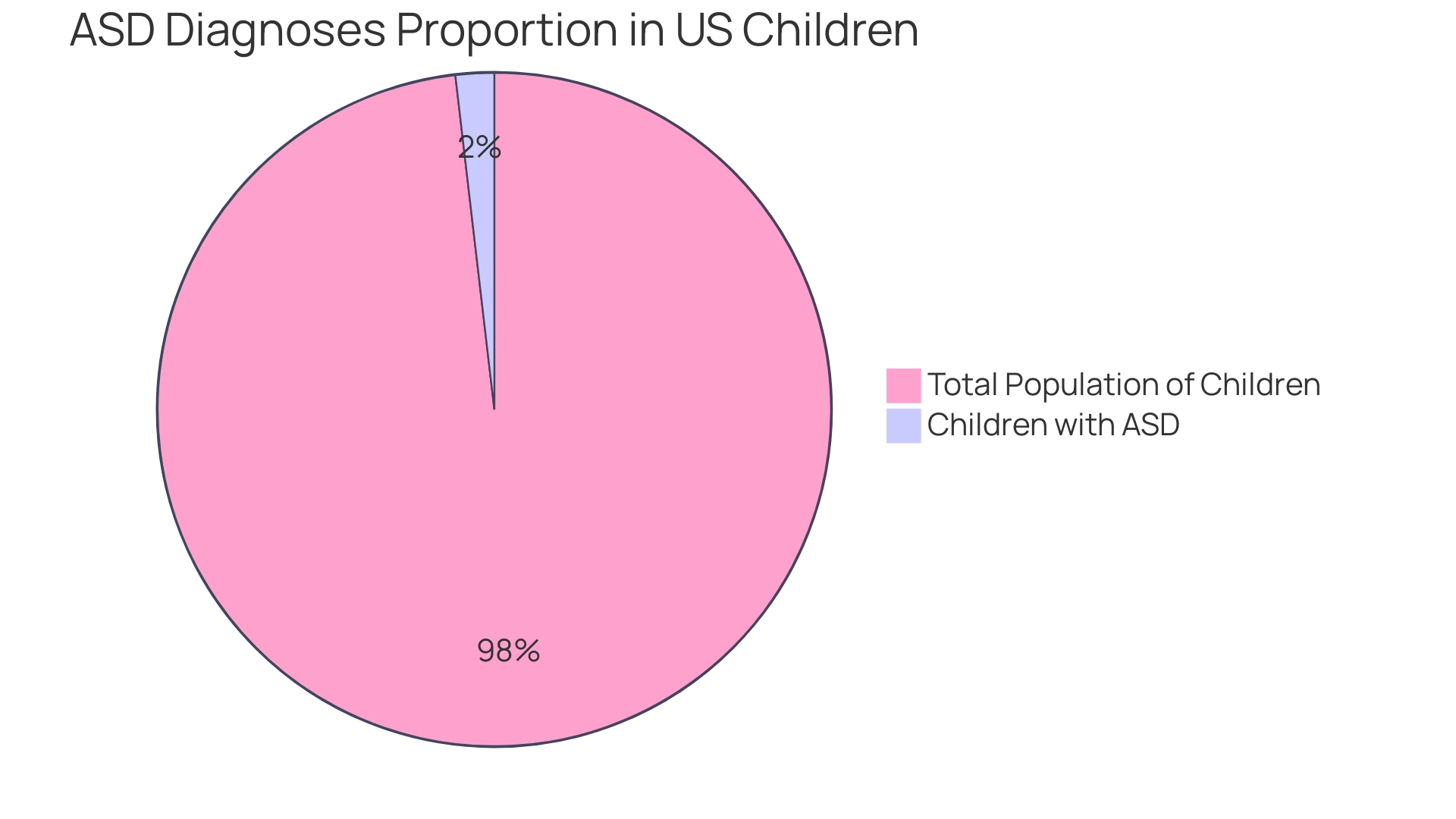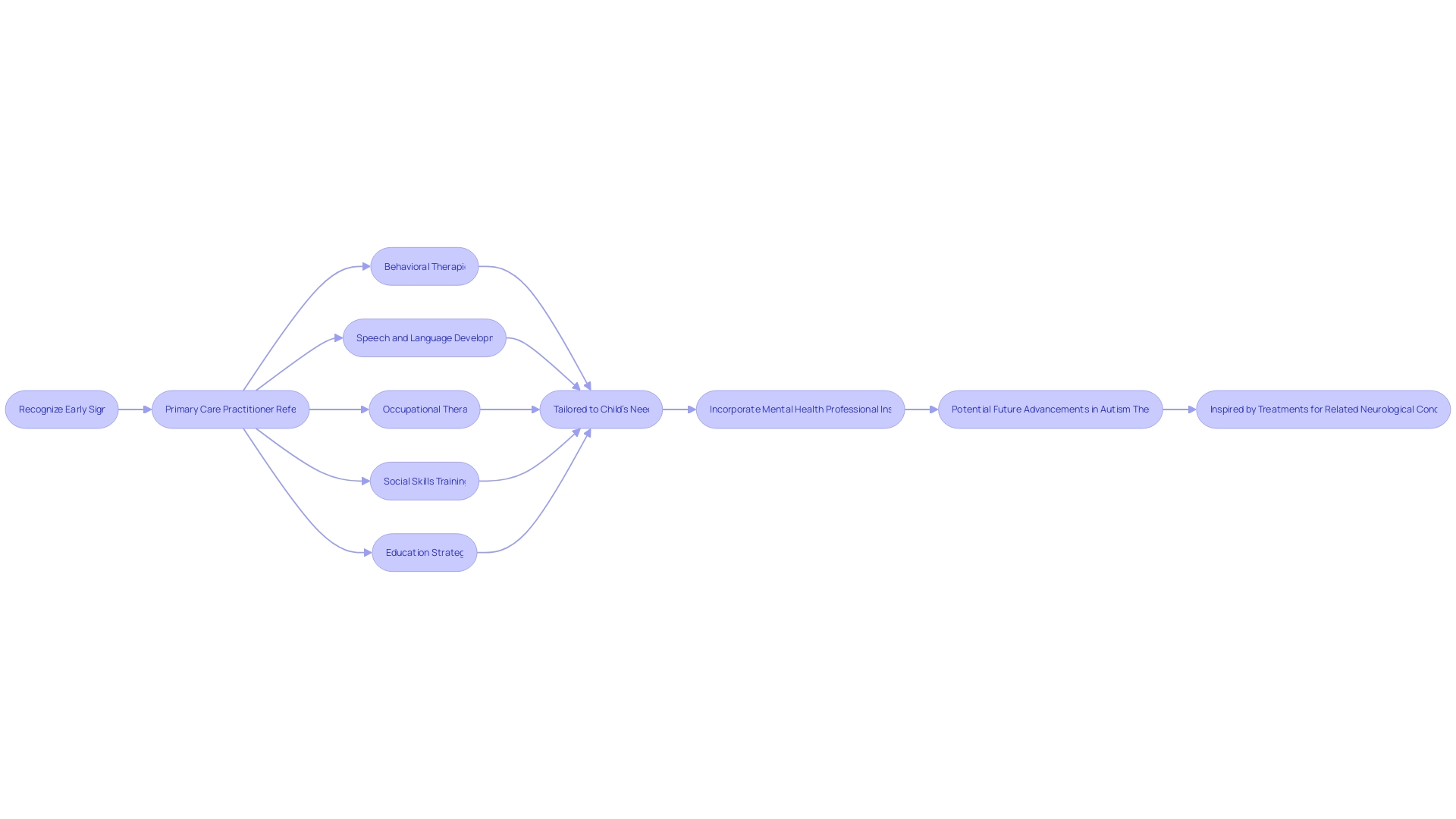Introduction
Autism Spectrum Disorder (ASD) is a complex developmental condition that presents challenges in social interaction, communication, and behavior. As a Parent Advocate, understanding the intricacies of ASD is crucial for ensuring the well-being of your child.
In this article, we will explore various aspects of ASD, including its definition and characteristics, impact on individuals and families, prevalence and demographics, causes and risk factors, diagnosis and evaluation, treatment and intervention options, as well as available support and resources. By providing guidance and insights, this article aims to empower you as a Parent Advocate in navigating the challenges that come with raising a child with ASD.
Understanding PDD
Autism Spectrum Disorder (ASD) is a complex developmental condition that involves persistent challenges in social interaction, speech and nonverbal communication, along with restricted/repetitive behaviors. The American Psychiatric Association's DSM-5 provides standardized criteria for diagnosing ASD, emphasizing the importance of a comprehensive evaluation that includes parent or caregiver input and professional behavioral observation. Specialists such as neurodevelopmental pediatricians or child neurologists may be involved in the diagnostic process.
The Autism Diagnostic Interview-Revised (ADI-R) is a notable clinical tool focusing on reciprocal social interaction, communication, and restricted behaviors. According to recent statistics, there has been a notable increase in the prevalence of developmental disabilities in children, although the rates of diagnosed ASD have remained stable. From 2019 to 2021, the prevalence of any developmental disability in children aged 3–17 years rose from 7.40% to 8.56%, with boys being over three times more likely to be diagnosed with ASD than girls.
Understanding developmental milestones is crucial in identifying ASD early on, as delays in social skills or communication may be indicative of the condition. Experts stress that behaviors often seen in individuals with ASD, such as difficulties with adapting to change or responding to demands, are not acts of willful disobedience but rather attempts to regain control and achieve a sense of equilibrium, known as 'equalizing' or 'leveling'. This perspective is essential for accurate diagnosis and understanding, as individuals with ASD may also present with co-occurring conditions like anxiety or depression, which can complicate the clinical picture.
Definition and Characteristics
Autism Spectrum Disorder (ASD) is often identified in early childhood and can significantly impact functioning across multiple domains. Individuals with ASD may experience a range of symptoms, such as difficulties in social interaction, communication challenges, a tendency for repetitive behaviors, heightened sensory sensitivities, and a preference for predictable routines.
With each person presenting unique patterns and intensities of these core characteristics, it's vital to appreciate the individuality within the spectrum. A case in point is a five-year-old boy with ASD and Avoidant/Restrictive Food Intake Disorder (ARFID), whose social determinants of health, including lack of insurance, have severely limited his access to comprehensive care.
This highlights the importance of a supportive healthcare system that can navigate the complexities for families affected by ASD. His mother's concerns about the lack of sufficient therapies and the barriers to care reflect the daily struggles that many families face.
Moreover, developmental milestones are crucial in identifying ASD. Delays in language, social skills, or cognitive development may be early indicators.
For instance, the mother of a patient reported severe speech delays and behavioral challenges, exacerbated by sleep disturbances. This underscores the need to monitor developmental progress against established milestones. It's important to recognize that children with ASD are not intentionally defiant but may struggle to regulate their nervous systems when they feel a loss of control or equality. The desire to do well is inherent, yet the ability to manage their responses can be lacking. Supportive strategies and understanding from caregivers are essential in fostering a positive environment for growth and learning.
Impact on Individuals and Families
Navigating life with PDD can be particularly challenging, impacting every aspect of daily living. Relationships may strain as individuals with PDD often grapple with social communication.
This can extend to struggles in academic environments and the workplace, where behavioral expectations and social interactions can be complex and overwhelming. The weight of these challenges is not carried by the individuals alone; families to experience profound stress.
Financial concerns are common, as the costs associated with therapy, educational support, and other essential services accumulate. The need for additional support services can become a pressing reality, as families seek to provide the best possible care and opportunities for their loved ones.
The rEUsilience project, which examines the socio-economic risks faced by diverse families across Europe, has revealed that such burdens are not distributed evenly. Low-income families, single-parent households, rural dwellers, migrants, and those with unpaid caregiving responsibilities are often hit hardest.
These layers of challenges intertwine, making it exceedingly difficult for families to break free from hardship. Moreover, early intervention is shown to be of paramount importance. According to recent research, the benefits of early support extend beyond the individual, with a potential positive cost-benefit to the justice system and community ranging between $9.8–19.1 million. This is due to reduced youth crime and improved family functioning, which includes enhanced parental capacity and a more supportive home environment. Such gains underscore the profound impact that timely and effective intervention can have, not only on individuals with PDD and their families but on society as a whole.
Prevalence and Demographics
Autism Spectrum Disorder (ASD) is a developmental condition that presents challenges in social interaction, communication, and behavior, often appearing in early childhood. Recent data reveals that the prevalence of ASD is on the rise, with current estimates showing that approximately 1 in 54 children in the US is diagnosed with the condition. Boys are particularly affected, being over three times more likely to be diagnosed than girls.
These statistics underscore the necessity for early intervention and tailored support. In Australia, for example, comprehensive assessments for autism involve multidisciplinary teams, without age restrictions for diagnosis, highlighting the importance of early detection. The National Disability Insurance Scheme (NDIS) exemplifies a structured approach to providing personalized support plans, including vital early intervention services focusing on communication, social skills, and behavior management.
Education, protected by legal frameworks like the Disability Discrimination Act (DDA) and Disability Standards for Education (DSE), ensures the right to inclusive education for individuals with autism. The increase in autism diagnoses doesn't necessarily indicate a surge in the condition itself but may reflect greater awareness, refined diagnostic criteria, and improved access to healthcare services. Nevertheless, the rise calls for enhanced understanding and resources to support the diverse needs of individuals with ASD and their families.

Causes and Risk Factors
Understanding the complex interplay of genetic and environmental factors is crucial in the study of Parkinson’s disease (PD). Recent research in the Deep South of the United States has shed light on the relative impact of these factors.
For instance, while genetic mutations can increase the risk of PD, environmental exposures also play a significant role. Exposure to military-related chemicals has been identified as a significant risk factor, with twice the strength of association compared to commonly used pesticides and herbicides.
However, its overall impact on disease burden is less due to its rarity. This insight comes from the use of the population attributable fraction (PAF), a metric indicating the percentage of disease that could be prevented if a risk factor were eliminated.
The application of PAF in the context of PD is novel and offers a strategic approach to intervene and reduce disease burden. Furthermore, advancements in the field have led to the development of biomarkers that can detect the presence of PD-related biological factors, such as the accumulation of the protein α-synuclein, which is associated with neuron degeneration. This progress is crucial, as traditional diagnostic methods based on clinical features do not fully account for the intricate biological processes involved in PD. With the understanding that PD can exist in the brain long before clinical symptoms appear, researchers, including Dr. Huw Morris, emphasize the need for more research to facilitate early diagnosis and better understand the disease’s pathogenesis.
Diagnosis and Evaluation
The pathway to an autism diagnosis can be a complex and time-consuming journey for many families, often requiring a visit to a specialist, which can take over a year to arrange. However, hope is on the horizon with new research indicating that primary care clinicians, when given special training, can accurately diagnose autism in most cases. This is a game-changer, as it aligns with the findings that autism can be reliably identified by age 2, yet the median age of diagnosis is currently over age 4, according to the Centers for Disease Control and Prevention.
Autism, a condition that now falls under the broader category of Autism Spectrum Disorder (ASD), presents with unique challenges, including difficulty with social interactions and a tendency towards repetitive behaviors. The American Psychiatric Association's DSM-5 offers criteria to assist in diagnosing ASD, and while there are various tools to evaluate young children, reliance on a single tool is discouraged. Instead, a combination of caregiver insights and professional observations is key.
For parents concerned about developmental delays—which can sometimes indicate autism—it's vital to consult with a healthcare provider. Such delays are often marked by a child not reaching certain developmental milestones. Early intervention can make a significant difference, helping children to achieve their full potential.
The ADI-R, a clinical diagnostic instrument, is one of the tools used for assessing autism in both children and adults. Statistics reflect disparities in care access, with 40% of Medicare beneficiaries with Parkinson's disease not consulting a neurologist in a year, and only 9.1% seeing a movement disorder specialist. These figures underscore the importance of improving access to specialized care and support, especially for people of color and those living in rural areas.

Treatment and Intervention Options
Autism, characterized by social communication challenges and repetitive behaviors, is a complex neurodevelopmental disorder without a cure. However, the power of early intervention cannot be overstated. A multidisciplinary approach is crucial, involving behavioral therapies, speech and language development, occupational therapy for fine motor skills, social skills training to navigate interactions, and educational strategies tailored to each child's needs.
These interventions aim to harness the brain's plasticity, especially in young children, to develop critical skills. The effectiveness of early intervention is highlighted by research emphasizing the role of primary care practitioners in recognizing early signs and facilitating prompt referrals. For instance, a study on early detection and treatment of eating disorders, though not directly focused on autism, underscores the importance of well-informed primary care networks.
Despite mixed results, it showed that professionals are often the first point of contact, signaling the need for their acute awareness of developmental milestones and potential red flags in children's behavior. Moreover, incorporating the insights of mental health professionals can refine interventions. As seen in a pilot study where mental health professionals used a prototype intervention, their feedback on language and content was invaluable.
By involving professionals in the treatment process and seeking their input on intervention materials, we can ensure that support strategies are both effective and user-friendly. In line with this, innovative treatments for related neurological conditions, such as Parkinson's disease, offer a glimpse into the future of intervention possibilities. For example, the introduction of produodopa for Parkinson's demonstrates the potential of continuous, controlled treatments to manage symptoms more effectively.
While these treatments are not directly applicable to autism, they reveal the advancements in neurological interventions that could inspire similar progress in autism therapies. Lastly, the involvement of individuals with autism and their families in shaping intervention strategies ensures that treatments are not only scientifically sound but also resonate with their lived experiences. This collaborative approach is integral to developing meaningful support that truly enhances the quality of life for those with autism.

Support and Resources
Navigating life with a Pervasive Developmental Disorder (PDD) can be an intricate journey for individuals and their families. However, a myriad of organizations and support systems are available, offering a lifeline through education, advocacy, and Community Connection.
COFACE Disability platform, for instance, shines a spotlight on the rights of families touched by disabilities, emphasizing the importance of understanding both the individual's needs and the family dynamics that surround them. They highlight that empowering people with disabilities often entails recognizing and supporting their families, who may experience a range of emotions and challenges, including feelings of isolation or the stress of caregiving.
Recent statistics reveal that during 2019-2021, there was a significant increase in the prevalence of diagnosed developmental disabilities, yet the levels of autism spectrum disorder and intellectual disability remained stable. This underscores the growing demand for support networks that can address the diverse experiences of families.
Moreover, news from the Parkinson's Foundation initiative, which provides free genetic testing and counseling, exemplifies the kind of actionable support that can make a difference. It is part of a broader effort to deepen our understanding of neurological conditions and improve therapies.
As one parent poignantly expressed, the ultimate goal is to foster independence and self-determination in our loved ones with disabilities. While parents cherish their nurturing role, they also aspire to see their children thrive autonomously. It's a delicate balance between providing care and stepping back to allow for growth, a sentiment echoed by Dr. Jill Bowen of the Department of Behavioral Health and Intellectual Disability Services, who advocates for a recovery model that integrates professional treatment with family and community resources. The journey towards recovery and resilience is a collective one, with about 1 in 8 women reporting postpartum depression (PPD) symptoms after childbirth. These women, alongside their families, can find solace and strength in the solidarity and resources provided by these dedicated organizations and initiatives.
Conclusion
In conclusion, as a Parent Advocate, understanding Autism Spectrum Disorder (ASD) is crucial for ensuring the well-being of your child. Throughout this article, we have explored various aspects of ASD, including its definition and characteristics, impact on individuals and families, prevalence and demographics, causes and risk factors, diagnosis and evaluation, treatment and intervention options, as well as available support and resources. Early identification through monitoring developmental milestones is key in recognizing ASD.
It's important to remember that children with ASD are not intentionally defiant but may struggle with regulating their nervous systems. The impact of ASD extends beyond individuals to their families. Navigating life with ASD can strain relationships and cause financial concerns.
Early intervention has shown positive outcomes for individuals with ASD and their families. The prevalence of ASD is increasing, highlighting the need for enhanced understanding and resources. Accessible diagnostic tools and improved healthcare services contribute to early detection.
Tailored support plans are vital in helping individuals with ASD reach their full potential. Understanding the complex interplay of genetic and environmental factors is crucial in studying the causes and risk factors of ASD. Biomarkers offer promising avenues for early diagnosis.
Primary care clinicians can play a role in accurate autism diagnosis with special training. A combination of caregiver insights and professional observations is key in evaluating individuals for an accurate diagnosis. While there is no cure for ASD, early intervention through a multidisciplinary approach can make a significant difference in developing essential skills.
Numerous organizations provide education, advocacy, community connection, and support for families touched by Pervasive Developmental Disorders (PDD). As a Parent Advocate, you have the power to navigate challenges effectively through early identification, tailored interventions, access to support networks, and collaboration with professionals. By fostering an environment that promotes growth, independence, resilience, and a better quality of life for your child with ASD.




